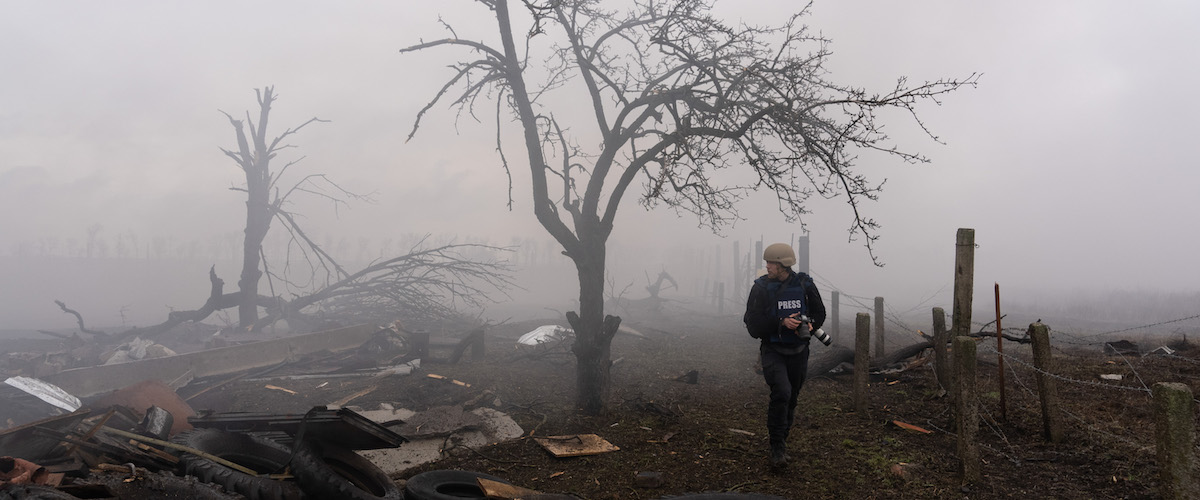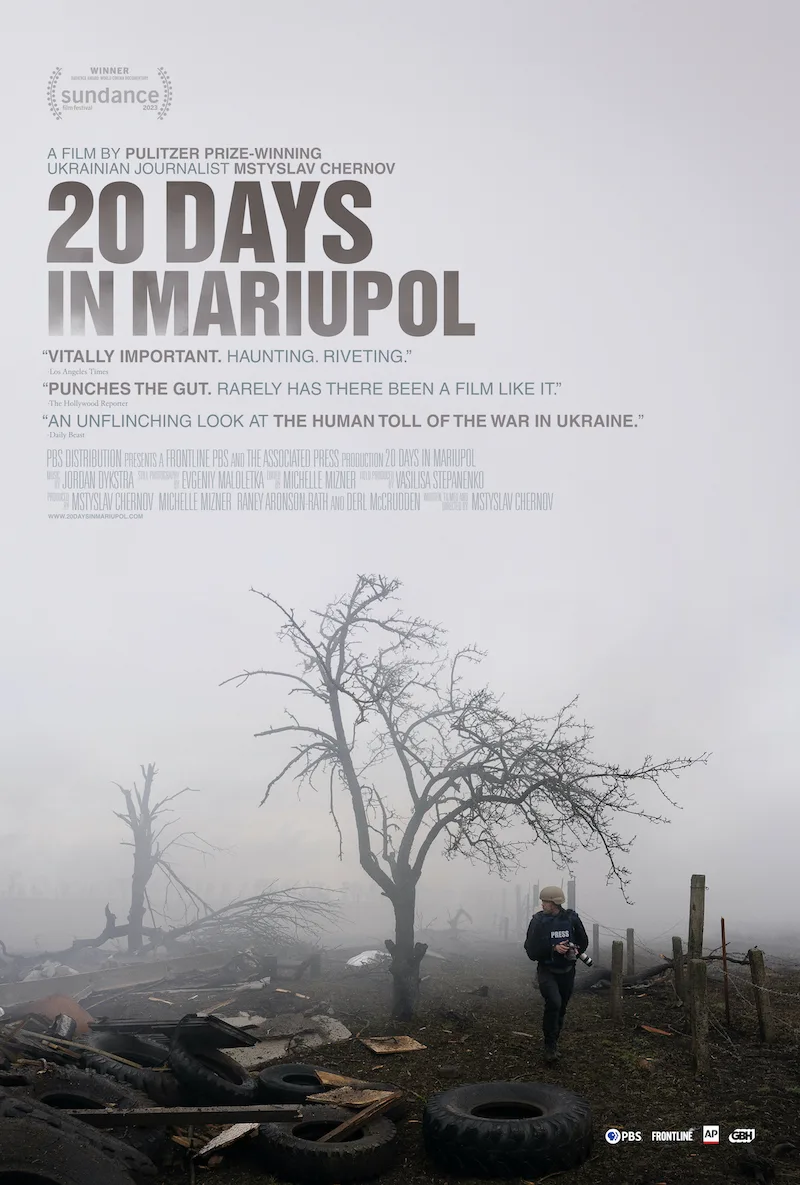“20 Days in Mariupol,” about the first 20 days of Russia’s invasion of Ukraine, spares no one’s sensibilities. It goes on a short list of great documentaries that the viewer will never want to watch again and likely won’t need to because some of the images are so gruesome and the context so upsetting that they’ll be burned into your memory.
Associated Press video journalist Mstyslav Chernov and two of his colleagues, photographer Evgeniy Maloletka and producer Vasilisa Stepanenko, were present for the first three weeks of the Russian onslaught, which began February 24 when Vladimir Putin announced a “Special Military Operation” in “self-defense.” Chernov’s narration confesses that he feels guilty for not staying longer, even though the odds of getting killed increased as the bodies of soldiers, civilians, and reporters piled up.
Although “20 Days in Mariupol” begins at the end, it quickly transforms into a linear report of what the journalists saw. This movie is culled from approximately 25 hours of material that Chernov’s team recorded on-site; they could only get 30 minutes of it to the Associated Press due to the size of video data. It’s questionable whether much of it would have been okayed for inclusion in reporting anyway because of the Western media’s aversion to showing blood and death.
A big part of what makes the movie so fascinating, valuable, and intense is how it lets certain events unfold in what feels like real-time, even though there are edits for the sake of compression and clarity. The only wholly unnecessary touch is a subdued minor-key synth score that plays during extended sequences of dread and terror. The movie doesn’t need it. The images and sounds speak for themselves.
What’s most striking about footage from the earliest days is the textbook surreality of it all. A scene will be set for us in a way that makes things seem typical or “normal.” The buildings and roads within camera range appear to be intact and functional. There are no planes in the sky, no tanks on the roads. Then comes an element that’s not normal, such as a plume of smoke on the horizon or a tearful older woman approaching the journalists to say she’s been driven out of her neighborhood with only the clothes on her back and doesn’t know what to do. (The filmmakers tell her to go home; she’s later found alive, but her house is destroyed.)
Things get weirder and more frightening from there. The city is pounded into rubble by Russian bombs, missiles, artillery shells, firefights, and vehicular damage caused by the arrival of armored columns. Martial law is declared. There aren’t enough bomb shelters to house all the civilians, so they huddle in basements as explosives rain down. Electricity, water, and internet service either cease or are choked to near-uselessness.
It becomes hard for anyone not in the military or the press to get reliable information. The journalists are reluctant to approach soldiers who seem to be Ukrainians because they might be Russians pretending to be Ukrainian. Even those with privileged access and protection have to sift through conflicting information, bad information, and disinformation. The movie shows rumormongering occurring on the streets of Mariupol and on Russian television news programs, which insist that reports of civilian casualties are “fake news” and that video of atrocities against Ukrainian civilians has been altered or manufactured. When a British journalist confronts Russia’s UN ambassador and asks him to comment on Chernov’s reporting, he says, unsettlingly, “Who wins the information war, wins the war.”
This is a dispatch from hell on earth. The fragmented, chaotic, imprecise nature of it is a revelation.
A four-year-old dies on an operating table after being shredded by Russian shells. A teenage boy playing soccer outside his school loses his legs in a bomb explosion; we see the bloody stumps as his body lies still on a gurney and see and hear his anguished father wailing. The last working surgeon in the hospital tells the filmmakers, “Show that Putin bastard the eyes of this child!” and yells, “Show what these motherf**kers are doing to civilians!” An eerily subdued sequence follows a team of volunteers dumping 70 bodies into mass graves. Half were Ukrainians killed in eight separate shellings in a 24-hour period. The rest were people who died at home of other causes but could not be collected and properly identified and disposed of because the invasion had destroyed the city’s infrastructure and bureaucracy.
An extended sequence dramatizes a news story that may already be familiar to viewers because it made international headlines: a pregnant woman who was about to give birth died along with her baby after being airlifted from the mostly-deserted obstetrics ward of the city’s bombed-out general hospital to another facility. Her pelvis was crushed by wreckage from the Russian bombing, making vaginal birth impossible. Medics tried to deliver the baby via cesarean section, but it was already dead. When the mother realized she was about to lose her child, she cried to the medics, “Just kill me now!”
“This is painful to watch,” Chernov tells the audience, “But it must be painful to watch.”
Now playing in theaters.




















